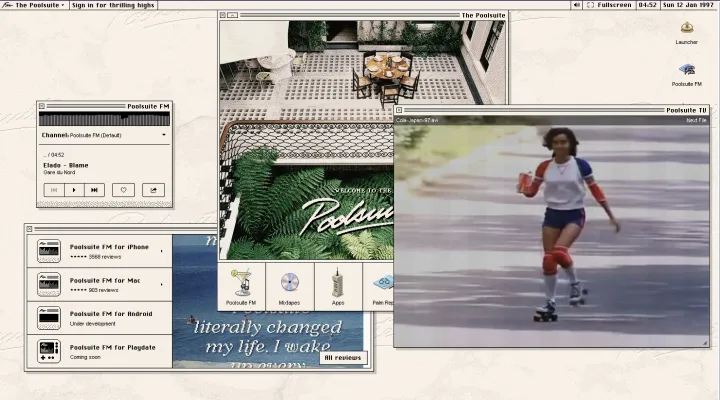Back to the Future: Why Retro Tech is Having More Than Just a Moment
The retro tech revival isn't just nostalgia - it's a revolution in how we interact with technology. From mechanical keyboards to vinyl records, vintage technology is teaching us valuable lessons about durability, repairability, and the enduring value of tactile experiences.
You know what's funny about technology? Sometimes the best way forward is to look backward. We're living in an age where vinyl records are outselling CDs, people are hunting down CRT TVs for their gaming setups, and mechanical keyboards are selling for prices that would make a 1985 IBM engineer faint. Let's dive into why retro tech isn't just trending – it's reshaping how we think about modern technology.
The CRT Renaissance
Remember when we couldn't wait to get rid of those heavy, bulky CRT monitors? Well, they're back, and for good reason. Modern gamers and retro enthusiasts have discovered what TV engineers knew all along: CRT displays offer zero input lag, perfect motion clarity, and deep blacks that even OLED struggles to match. What we once saw as limitations – the scan lines, the curve of the screen, the warm glow – are now celebrated as features that add character and authenticity to the viewing experience.
The Mechanical Keyboard Revolution
The click-clack revolution isn't just about nostalgia. Modern mechanical keyboard enthusiasts are rediscovering what IBM got right with the Model M: tactile feedback matters. Today's mechanical keyboard scene combines:
- Vintage switch designs (Cherry MX, Alps, IBM buckling springs)
- Modern manufacturing techniques
- Custom keycaps and artisan craftsmanship
- Open-source firmware for unlimited customization
The result? A perfect blend of old-school reliability and modern innovation.
Analog Audio's Unexpected Comeback
The vinyl revival isn't just hipster nostalgia – it represents a fundamental shift in how we consume music. In a world of unlimited streaming, people are rediscovering the joy of:
- Physical media ownership
- Album artwork as an art form
- The ritual of playing records
- Imperfect but warm analog sound
This has sparked innovation in modern turntable design, combining vintage aesthetics with contemporary features like Bluetooth connectivity and USB recording.
The Rise of Retro Computing
The retrocomputing scene has exploded, with enthusiasts:
- Restoring vintage machines
- Creating new hardware for old platforms
- Developing modern software for classic computers
- Building custom emulation devices
This isn't just about playing old games – it's about understanding computing history and preserving digital heritage. Projects like new Commodore 64 games or fresh Amiga hardware demonstrate how vintage platforms can still inspire innovation.
Cassette Culture Returns
Perhaps the most surprising comeback is the humble cassette tape. While not matching vinyl's resurgence, cassette sales have grown significantly. Modern artists are releasing on tape because:
- It offers a unique analog warmth
- The format forces intentional listening
- Physical limitations inspire creativity
- Each tape develops its own character
The Right to Repair Movement
Retro tech's popularity has helped fuel the right to repair movement. Older devices were:
- Built to be serviced
- Documented with schematics
- Designed with standard parts
- Made to last decades
This has influenced modern manufacturers to reconsider planned obsolescence and closed systems.
DIY and Maker Culture
The retro tech revival has energized the maker community through:
- Custom PCB manufacturing
- 3D printing replacement parts
- Open-source hardware projects
- Knowledge sharing and documentation
Modern Innovations in Retro Tech
Today's retro tech scene isn't just about preservation – it's about innovation:
- FPGA-based hardware clones
- Modern storage solutions for vintage computers
- USB adapters for legacy peripherals
- LED replacements for CRT monitors
The Environmental Angle
The retro tech movement aligns with sustainability through:
- Extended device lifespans
- Repair over replacement
- Component reuse
- Reduced e-waste
Social Impact
This trend has created communities focused on:
- Knowledge preservation
- Skill sharing
- Historical documentation
- Cross-generational learning
Looking Forward
The retro tech movement isn't about rejecting progress – it's about learning from the past to build a better future. We're seeing:
- New products incorporating vintage design principles
- Hybrid devices combining old and new technologies
- Growing appreciation for repairability
- Return to physical interfaces and tactile feedback
The future of technology might not be all touchscreens and voice commands. Sometimes the old ways – with their physical switches, analog dials, and mechanical feedback – offer experiences that digital alternatives can't match. As we move forward, the best innovations might come from understanding what previous generations got right.
The retro tech trend isn't just nostalgia – it's a revolution in how we think about technology, durability, and user experience. By looking back, we're actually moving forward, creating a future that combines the best of both worlds.



